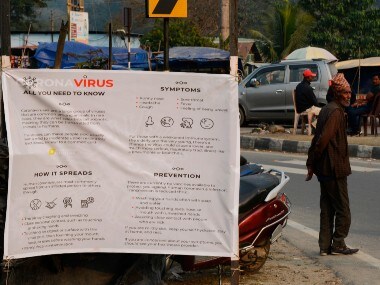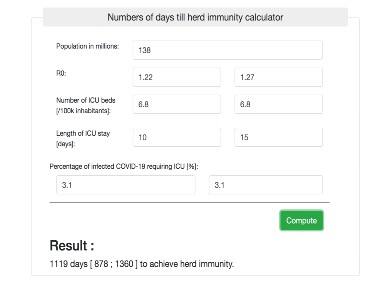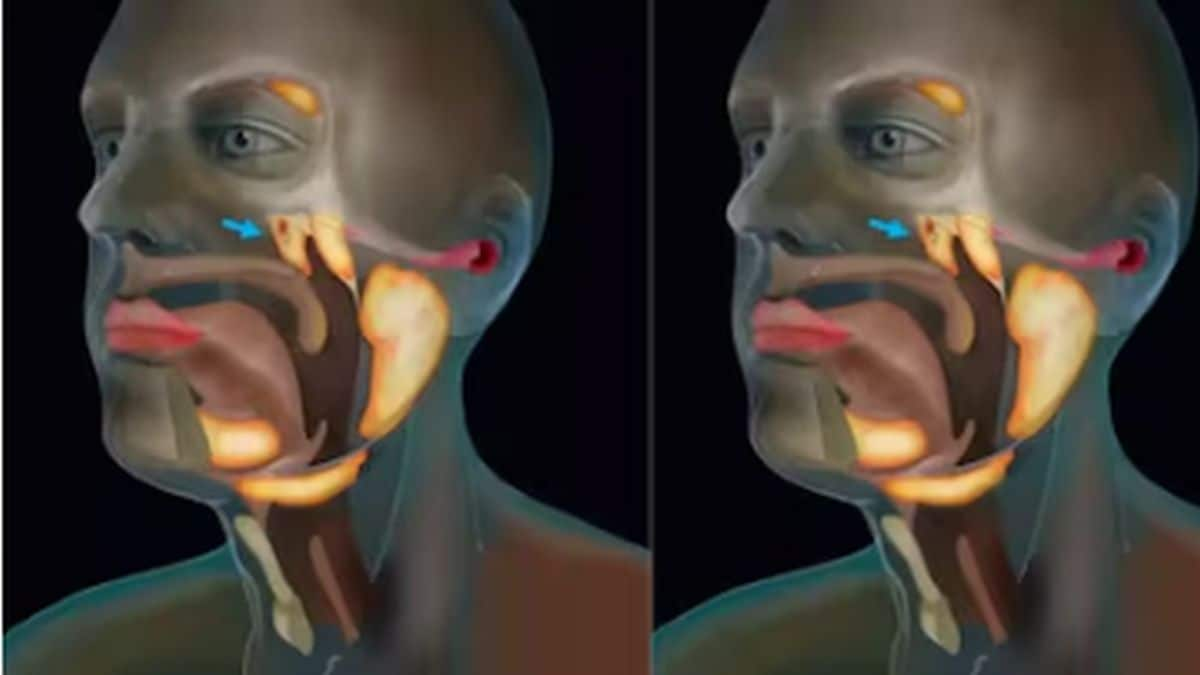COVID-19 started to spread late in December 2019. Since it is a new disease, no part of the human population was immune to it. In the presence of a susceptible population, the virus spread quickly leading to a pandemic. Experts around the world have been suggesting various ways to mitigate the spread of the disease and put an end to the pandemic. One of the suggested approaches is locking down cities and countries to break the chain of transmission and treat all the cases that show up - the strategy that most countries employed. [caption id=“attachment_7996191” align=“alignleft” width=“380”]  Representational image. Image source: Getty Images.[/caption] Another suggested and much-debated approach is to avoid lockdowns and let the populations gradually develop herd immunity against the infection. Herd immunity refers to a situation in which a major part of a population (somewhere around 60 - 90%) develops some form of the disease and, therefore, become resistant to it. However, with that many cases, the health systems are bound to get overloaded. Some severe cases of COVID-19 require to be admitted into the ICU (intensive care units) - which there are only so many of. The result could lead to more preventable deaths - a scenario that nobody wants to create.
Herd immunity without burdened ICUs?
In research done in Belgium, scientists analysed the feasibility of developing herd immunity in a population without burdening the ICUs. The researchers used an online tool from about-the-curve.net and the SIR (Susceptible-Infected-Recovered) model for the spread of disease to estimate that without burdening the ICUs, it would take about 5 months for the US, 22 months for the UK and about a year for Italy to develop herd immunity. About-the-curve.net is run by Yves Moreau group, part of STADIUS at KU Leuven University in Belgium. The group works on AI, bioinformatics, human genetics and machine learning. Yves Moreau is a professor of engineering at the University of Leuven. He also teaches bioinformatics, especially focusing on probabilistic methods in computational biology. The UK had proposed the concept of herd immunity at the beginning of the outbreak but a lockdown was put in place once the number of cases increased in the country. The research is still in the preprint phase and is yet to be peer-reviewed.
The study
As per the study, herd immunity against a disease is achieved in a population when a fraction of the people become immune to it. In a classical SIR model, the number of people can be obtained by the formula: 1-1/R0. The number of people infected at the epidemic peak could be calculated by the formula: 1-1/R0 - ln(R0)/R0. R0 — pronounced “R naught” — here is the basic reproduction number which determines how many people a single person will infect during their infectious period. So say if the R0 in a place is 2.2, at least 55% of the population has to be immune against the disease for herd immunity to develop. ICMR’s study from before the lockdown estimated the R0 of the coronavirus disease in India to be 4. Since then, experts say that the R0 of India has decreased and that last week it was 1.22. As per this, at least 18% of the population in the country will have to be infected and immune for herd immunity to develop. With a population of more than 1.38 billion, even 18% is a huge number - approximately 250 million. The risk of deaths is higher in the elderly and those with comorbidities and pregnant women. According to a report by the Center for Disease Dynamics Economics and Policy (CDDEP), India has about 94,961 ICU beds and government sources have previously stated that about 3.1% of all infected people require ICU beds. Now adding India’s population - (1,380,004,385) in it and an R0 between 1.22 to 1.27 (the R0 reported on May 8), India might need 1119 days (roughly 3 years) to reach herd immunity right now.
The concerns
As per the study, even though the math shows the approximate time required to achieve herd immunity through the controlled spread of the disease, right now there are two major concerns in achieving it. [caption id=“attachment_8421091” align=“alignleft” width=“380”]  Screenshot from www.about-the-curve.net.[/caption] One, we don’t know for how long a recovered person gets immunity for. So say a person is immune for less than the time needed to achieve herd immunity, the whole process would have been for nothing. Also, it is best to not try for herd immunity, if this time taken to achieve herd immunity is more than what’s needed for a vaccine to develop (which, as per most experts, is between 12-18 months). To keep the ICU requirements stable, the R0 has to be maintained at 1 (on an average) and this might need frequent changes of non-pharmacological interventions (like social distancing in the population). For more information, read our article on What is herd immunity and can it stop COVID-19 Health articles in Firstpost are written by myUpchar.com, India’s first and biggest resource for verified medical information. At myUpchar, researchers and journalists work with doctors to bring you information on all things health.


)

)
)
)
)
)
)
)
)



